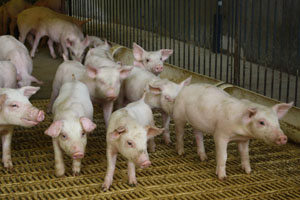Cephalosporin use – Shock, horror – or is it?

Many newspaper journalists like to use the ‘Shock, horror’ tactics to get stories noticed. Increasingly, it seems that scientific journals and microbiological research workers are using a similar game to identify a risk, so I thought I would try it.
We have just had European Antibiotic Awareness Day and it seemed everybody in the industry was preparing meetings, press releases etc to launch their latest findings, to keep the pressure up on the EU Commission and also other research funders. The more they look the more they find. New research techniques are employed to determine the resistance genes involved that may be transmitted to man from use in animals but, in a way, it is disappointing nobody tries to put it into any context, as to whether the risk might be an actual hazard or not – an opportunity for the epidemiologists?
There has been a lot of work monitoring antimicrobial resistance in pigs and looking for resistance that might be associated with the 3rd and 4th generation cephalosporins, such as ceftiofur and cefquinome, which may be used in pigs. They tend to select for bacteria that carry resistance genes, which produce extended spectrum beta lactamases (ESBLs) enzymes that destroy the antibiotic. By just taking faeces samples, isolating the bacterium (usually Escherichia coli or Salmonella spp) they may find them occasionally. In Danmap 2011 (2012) the recovery from pigs was 1% and from Danish pork 0%.
A recent Danish longitudinal study (Hansen et al, 2013) using specially selective media containing cefotaxime, another 3rd generation cephalosporin, which kills off all the susceptible E. coli, described the patterns of infection on three farms, which had previously used cephalosporins extensively before the voluntary ban in 2010 (see Figure 1).
In Farm A and B the focus of ESBL carriage was in the sows (week 0) and piglets (week 3), where most of the cephalosporins are used by injection. After weaning the incidence dropped rapidly in the grower phase (week 9) and dropped further in the finisher phase (week 23). In Farm C there was a completely different pattern with sows and piglets being negative. There was a small increase in the grower stage but it had returned to zero in the finisher phase. It is thought that the small increase in the grower stage may be associated with the use of co-selective drugs such as the aminopenicillins. Penicillins themselves do not seem to have an effect neither does the macrolides, lincosamides or pleuromutilins that also do not have an activity against E. coli. Farm A and B still used aminopenicillins in their piglets and it is thought that this plus poorer hygiene systems than Farm C may have had an impact.
In another study, Agerso and Aarestrup (2013), again using selective media, showed that 10.8% of Danish pigs at slaughter carried ESBL producing E. coli in 2009 but this fell to 3.6% in 2011. At pig farm level, it fell from 11% in 2009 to 0% in 2011 but the occurrence in pork products was at 1.3 and 0.9%, respectively.
In the Netherlands, they found in normal surveys that the incidence of ESBL-producing E. coli was only 3.7% in 2009 and 0% in 2012. However, by using selective media, 74.8% of batches of pigs at slaughter were positive and 30.9% of pigs sampled were positive. Interestingly, only 1% of carcasses were positive for E. coli producing ESBLs, due to the good hygienic processes at the slaughterhouse and minimal carcass contamination (MARAN, 2013).
So, Shock, Horror – the use of cephalosporins in piglets can cause a high incidence of ESBL-producing E. coli. The incidence in the pig declines with age, as they have to compete with the millions of other bacteria in the gut (the microbiome). So if you stop using cephalosporins or stop using them as a routine in piglets but reserve them for restricted use only and follow the ‘responsible use’ guidelines, then the incidence should subside further.
If we go a step further and look at transmission to man, good hygiene practices at slaughter minimises carcass and meat contamination. If the meat is further processed and/or cooked, the chance of these ESBL producing bacteria surviving, firstly cooking, then swallowing and meeting the acid in the stomach and digestive enzymes and other competitive bacteria in the gut, is remote. If we use Salmonella Typhimurium transmission, another enterobacteriaciae species with a similar carcass contamination rate (EFSA, 2011), as a model, it can be calculated in the order of 0.001% of the UK population or 1 person in 100,000 population. The E. coli will not cause a digestive problem like salmonellae and it is only a potential problem if that person is to be treated with 3rd and 4th generation cephalosporins in hospital and the resistance gene has been passed on to the bacterium causing the infection.
So, is it really a problem? What do you think?











